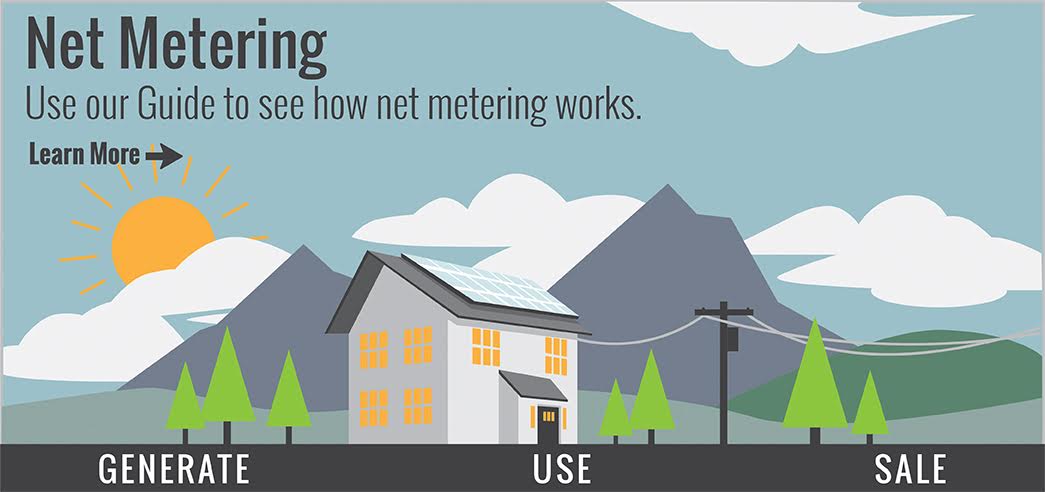Net Metering
Net metering is the process of measuring the difference between the electricity supplied to a customer by their utility and the electricity fed back to the utility by a customer’s electric generation system (such as solar panels) during the customer's billing period.
In Vermont, customers in the same utility service territory are allowed to form "groups" to share in the output of a net metering system.
Net metering allows residential and commercial customers who generate their own electricity from solar power to feed electricity they do not use back into the grid.
To Find out more information regarding Net Metering in VT, including required state forms, check out the Vermont Public Service Board's website:

What does this mean to you?
Net metering is a billing mechanism that credits solar energy system owners for the electricity they add to the grid. For example, if a residential customer has a PV system on the home's rooftop, it may generate more electricity than the home uses during daylight hours. If the home is net-metered, the electricity meter will run backwards to provide a credit against what electricity is consumed at night or other periods where the home's electricity use exceeds the system's output. Customers are only billed for their "net" energy use.
